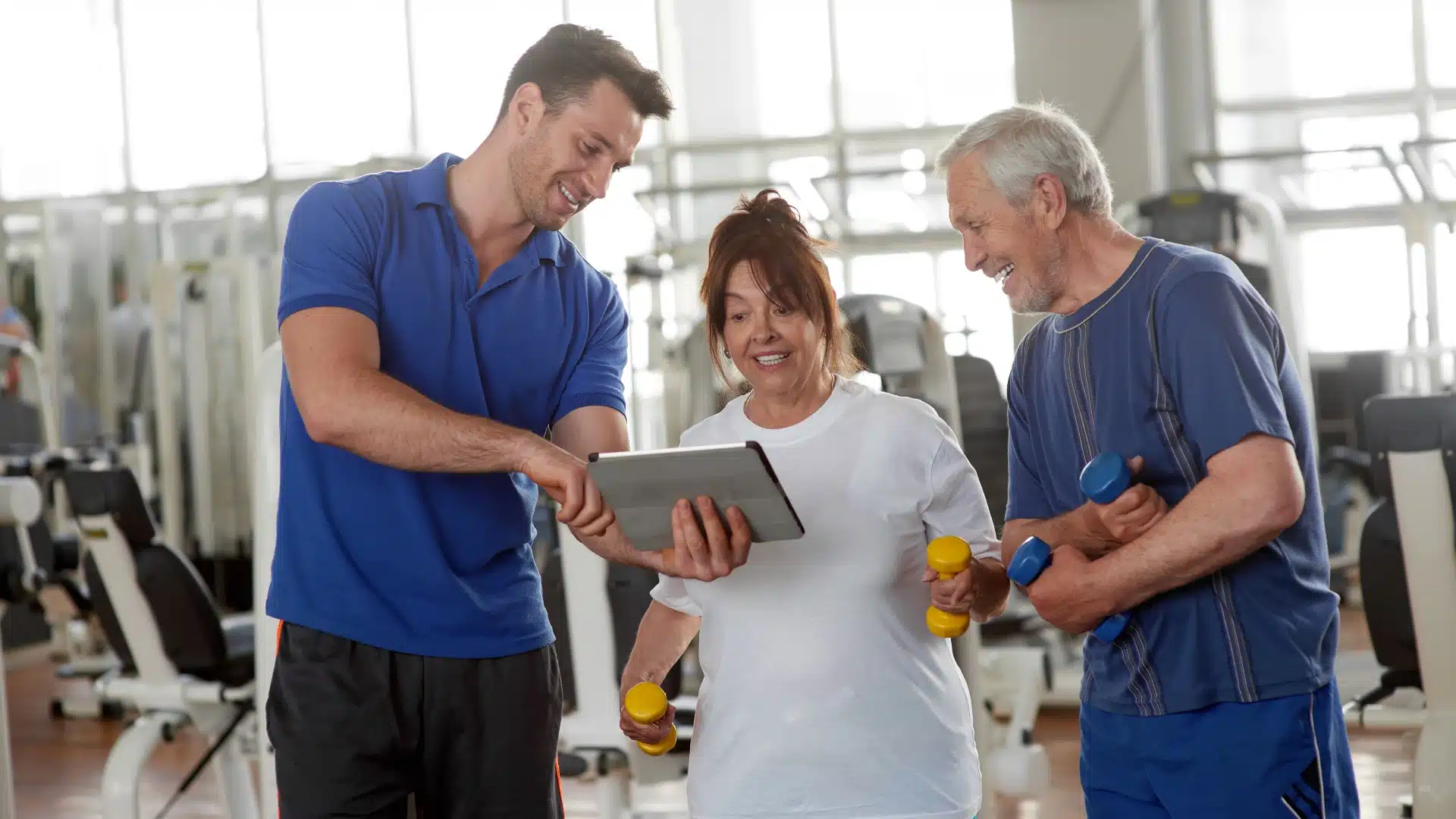It’s Time To Change Your Club’s Focus To Long Term Health Over Short Term Fitness
What if we told you there is a sector for growth that large portions of the Fitness Industry is completely under-utilising?
One that is near essential for futureproofing the industry?
One that has only become more pertinent in the wake of the Covid-19 Pandemic and lockdowns?
One that independent gym and fitness club owners are in a unique position to take advantage of?
Well look no further, because there is!
From simple implementations to far-sweeping changes, the contribution of private and independent gyms and fitness clubs to long term, public and medical health is as critical as it is undervalued.
We will be taking a look at a few of the causes, how to address them and how they can increase the profitability, effectiveness and attractiveness of independent gyms and fitness clubs!
The main 5 factors we’ll discuss in this article are: (click to jump ahead)
Factor 2: Underutilised Technologies
Factor 3: Lack of Recognition/Funding/Integration
Factor 4: Lack of Recovery Classes
Factor 5: Further Low Intensity and 50+ Quality of Life Classes
Factor 1: Healthy Lifestyle Complacency
It can be tempting to feel there is complacency among many governments when it comes to recognising the role that Gyms and Fitness Clubs have to play in societal health.
Outside of scattered examples such as Queensland, where Australia granted Gyms and Fitness Clubs ‘essential’ status, there is a prevalent apathy to treat fitness facilities as no more a benefit to society than the cinema or the bowling alley.
This became especially clear during the Covid-19 pandemic and the subsequent lockdowns.
While there are, of course, publicly funded fitness facilities, swimming pools and health campaigns that receive government funding, it can feel like these exist in a vacuum from the private and especially independent gyms and fitness clubs.
It seems that governments are very content to keep these on two distinct sides, denying the boons and benefits that a supported, guided, and encouraged private fitness sector could contribute to societal help.
In this article we will be looking at not just the means to achieve this practically, but what needs to change in terms of perception.
Factor 2: Underutilised Technologies
One of the most underutilised tools of value generation for independent gyms and fitness club owners are in our pockets right now!
The rise of the portable computer we now call a smartphone, the implementation of free and fast WiFi in most public spaces, as well as the emergence of new health and fitness technologies mean that a perfect storm of factors are forming to allow for a health and fitness integration revolution in the next decade.
We are already seeing the smartphone application offering from gyms and fitness clubs increase in sophistication rapidly, as well as the ability of gym equipment to synchronise with external aspects of a gym member’s life.
As we said before, this process has been long in the making. Ever since the longevity movements of the 1970s combined with the technological revolution of the 80s and 90s, there have been trailblazers willing to push Gyms and the fitness industry at large forward.
By researching the ways that portable technology can be synced up with a gym or fitness club, owners are ensuring their club remains futureproof and at the cutting edge!
The Fit Club Redditch Members App Provided By Ashbourne
Factor 3: Lack of Recognition/Funding/Integration
The fitness industry of the 2020s might be remembered as being in a vicious cycle. One where a lack of recognition fed into stagnation and vice versa.
But it is up to us to break that cycle!
A large problem facing the fitness industry is a lack of recognition for the immense service it already provides and the massive role it will play in the years to come.
By reorienting our collective perspective, we can start to advocate for greater recognition and support when it comes to improving public and societal health.
By lending their voice to organisations like UKActive and reaching out to local councils, independent gym and fitness club owners can spearhead the charge towards greater recognition, support, funding and integration for the service and value they add to public health.
A change of rhetoric is required to bridge the gap. One that will be explored at the coming Gym Owners Workshop! If you are interested to learn more, scroll to the bottom of this article for further information and links!
Factor 4: Lack of Recovery Classes!
While it has risen in prominence, it is essential we do not take this rise for granted and continue to capitalise on it. Independent gyms and fitness clubs are eager to provide recovery programmes and as public perception increases, gym members are becoming interested.
So what are we talking about when we say ‘recovery’?
Recovery serves as a shorthand for both physical and psychological well-being. It takes the form of a workout of lower intensity than the member is used to partaking in. It is based on the philosophy that low to moderate-intensity routines on rest days can help the body to recover more effectively from working out, as well as reduce stress and improve mental well-being.
It has become so effective that people are even utilising the classes and routines outside of their usual training regime. Dedicated recovery-focused classes have become increasingly popular and are a good example of a class and routine that is designed for pure health and not aesthetics.
For independent gym and fitness club owners, this rising format carries an opportunity to provide service and support to a variety of different members. The great thing about these recovery-focused classes is that they can target everyone from the supremely dedicated, 5+ session a week member, or someone who is simply looking to steadily improve their baseline health and way of life.
Classes such as this are a great way to connect with members and reinforce why they go to fitness facilities. By shifting the focus to a less intense style of exercise, it will recentre the focus to a broader audience.
Comparatively few over 50s want to look like Arnold Schwarzenegger, but they do want to maintain their quality of life for longer!
Factor 5: Further Low Intensity and 50+ Quality of Life Classes
And this desire for low-intensity and recovery workouts is not happening in a microcosm. It is part of a push towards more practical, longevity-focused workouts.
It is certainly not just for people under 40 to recover from their exercise regime!
Previously we have written about how an ageing population presents opportunities and the chance for a realignment.
Part of this will be for independent gym and fitness club owners to allocate resources to low-intensity and health-based recovery classes and facilities.
By specifying the low intensity, health based nature of the workout you increase the potential for a broader demographic uptake dramatically!
The great news is that this is something that can (and should!) be utilised by younger members as well, hence the drive for both routine recovery on rest days and broader healthy living.
The potential benefits associated with running these sorts of longevity, general health, and recovery classes are numerous. Some members will be more willing to come in for a session they know will benefit them but not push them to the limit. This can increase engagement with the existing members, as well as draw in new membership. In addition, it can help members who would otherwise spend their rest day resting to come in more often, thus creating a retention cycle.
In addition, it will have the benefit of increasing the health of the member base and lowering injury time. It will be an additional service to advertise and it has often been seen as one of the most community-focused class genres. While it will require some initial training and space to do correctly, the benefits that this approach can have on independent gyms and fitness clubs and their membership cannot be overstated.
Want To Learn More About Growing Your Club?
Hopefully, we’ve piqued your interest now in the potential that a greater focus on health has to transform the industry!
If so, look no further! The Gym Owners Workshop at the Talbot Hotel Stillorgan, Dublin will be exploring this and many more issues pertinent to Irish and British gym and fitness club owners.
After the success of the Gym Owners Workshop 2022, the 2023 event is promising to be bigger and better!
One of the title talks will be particularly relevant to today’s topic. It is called ‘Health Over Aesthetics – How Rethinking The Industry Message Future Proofs Its Status, Drives Membership Growth & Increases Revenue’ and provides a deep dive into how a great focus on health will help future-proof businesses in the long run and ramp up profits in the short!
As we’ve explored today, health is going to be an ever more pressing issue for the fitness industry so do not miss the chance to hear industry experts talk about this and much more!





